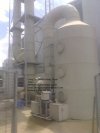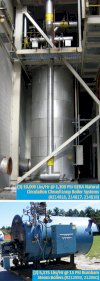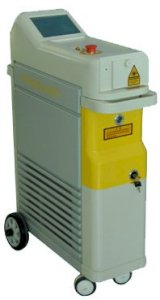Mô tả sản phẩm: Hệ thống Otolaryngology Laser Microscope Adapter Therapy
Otolaryngology Laser Microscope Adapter Therapy System
The system is consists of three major parts: Model KL CO2 laser therapy instrument, operation microscope and the microscope adapter.


« International advanced technology, exclusive in China.
« Connected with import and domestically operation microscope facility and instantly.
Applicability
To treat the disease in laryngopharynx, such as polypus in the pharynx, polyp of vocal cord, keratosis of larynx, palsy of double vocal cord, Laryngeal stenosis, papillary epithelioma of larynx, cyst of epiglottis, hemangioma of larynx, benign tumor of larynx, early cancer of larynx, etc.
Applicability of the single CO2 laser therapy instrument
T Otology: resection of stirrup bone, secretory otitis, pseudocyst of auricle, papillary epithelioma of acoustic duct.
T Nose: hypertrophy inferior turbinate, chronic sinusitis, scar conglutination of nasal cavity, nasal polypus, tumor of nose and nasal sinuses, angioma of nasal cavity, choana atresia.
T Pharynx: resection of tonsil, laser coagulation of lymph in the posterior wall of pharynx, nasopharyngeal carcinoma, tumor of pharynx
T Larynx: vocal cord carcinoma, maculae blaze of vocal cord
Main Technical Parameter
J Laser tube: Single mode output
J Colorful touchable LCD
J Terminal output power: 1-30W, 0.3W, 0.5W, 0.8W, then stepped by 1W
J Laser output mode: continuous output, single pulse output, repeat pulse output, super pulse
J Aiming beam: red semi-conductor laser, 650-670nm
J Power supply: 220V±10%
Clinic Merit
T Minimum trauma, jugular or trachea incision isn’t needed.
T Less bleeding with clear field of vision
T No contact treatment, under the introduction of red target point, high accuracy
T To reduce pathogenic living organ transplanting
T Functions save form damage, cicatrization rapidly, with puny scar, little infection
T Puny trauma and short operation duration, reduced the patient’s agony, hospital stay is short.
T Operation simply, safe, labor intensity at a low level


























